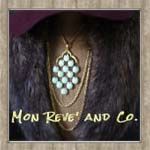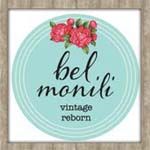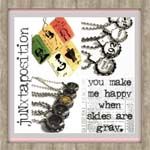"Collecting Tips for Antique Prints"
from Nancy at Victorian Rose Prints
Let’s chat about the old COLOR prints, those dating to the late 1890’s. Louis Prang was the first to introduce the process of chr
 omolithography (in 1860), and it was this method that gave prints their color qualities. Prior to that time, prints were hand-colored with watercolor paints. (A good example of this venue can be seen in Godey’s Lady's Book, their dress attire.) In a nutshell, chromolithography required that a single stone be constructed for each color hue. As many as twenty-two stones may have been required to create a single image. Each inked stone was meticulously laid down, one at a time, atop previous color layers. All of the stones had to be in perfect alignment, or register, or the image would appear blurry.
omolithography (in 1860), and it was this method that gave prints their color qualities. Prior to that time, prints were hand-colored with watercolor paints. (A good example of this venue can be seen in Godey’s Lady's Book, their dress attire.) In a nutshell, chromolithography required that a single stone be constructed for each color hue. As many as twenty-two stones may have been required to create a single image. Each inked stone was meticulously laid down, one at a time, atop previous color layers. All of the stones had to be in perfect alignment, or register, or the image would appear blurry.Because of the rich layering of oil-based inks, “chromos” appear as if they have an almost pearly sheen when tilted from side to side. Often the color layers would bleed through to the reverse of the print. Chromolithographs have no equal, they are truly magnificent, not only in their stunning image quality, but also in the time-consuming manner used to create them. It is possible that you may see a print only once in a whole lifetime of collecting, because not all finished proofs went into production.
 When examining a chromolithograph, it is best to use a magnifying glass. Peer closely at the color pattern, and you should see a random pattern of irregular-sized dots. This is the true test to determine a chromo. I've inserted a photo to give you an idea of what the dot pattern looks like. This photo appears almost "gritty". The best place to eyeball the chromo dot pattern is in lighter areas. It's quite visible here on the puffed sleeve and left side of the girls dress. Chromolithography was virtually extinct by 1900 when photolithography came into vogue.
When examining a chromolithograph, it is best to use a magnifying glass. Peer closely at the color pattern, and you should see a random pattern of irregular-sized dots. This is the true test to determine a chromo. I've inserted a photo to give you an idea of what the dot pattern looks like. This photo appears almost "gritty". The best place to eyeball the chromo dot pattern is in lighter areas. It's quite visible here on the puffed sleeve and left side of the girls dress. Chromolithography was virtually extinct by 1900 when photolithography came into vogue.Photolithography is the printing process used today. When th
 is pattern is viewed with a magnifying glass, it appears more like a fine grid or mesh, similar to a window screen. Unfortunately, since photolithography is still used today, it is difficult to determine if a print is old or new with magnification. Often an examination of the paper's age, or relying upon a reputable dealer who is acquainted with the old and new prints is the best venue.
is pattern is viewed with a magnifying glass, it appears more like a fine grid or mesh, similar to a window screen. Unfortunately, since photolithography is still used today, it is difficult to determine if a print is old or new with magnification. Often an examination of the paper's age, or relying upon a reputable dealer who is acquainted with the old and new prints is the best venue.Tune in Wednesday, February 2nd, for a continuation of this story. We'll give you more tips on what pitfalls can be expected, and more importantly, how to avoid them, when deciding to purchase an old print...
Do visit us for old prints at our Ruby Lane shop: Victorian Rose Prints
Or on Etsy for affordable, reproduction prints:
































